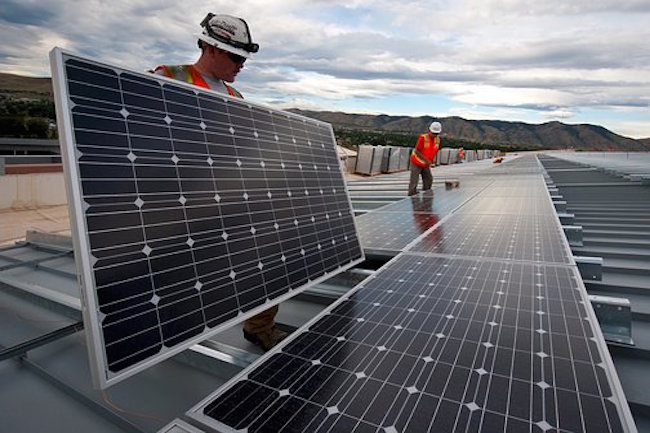Cutting Your Power Utility Cord by Dennis Williams for Survival Blog
A Short Primer on Making Your Own Electricity
Most of us have thought of the dream: A secluded retreat nestled in the woods, off the beaten path, no mortgage, no utility bills, raising our own food, homeschooling our children, spending time with our family, etc. Then we pop back to reality, and try to plan out and prioritize how we make it happen. How do we get from where we are to where we want to be?
Ten seconds of background on me: I have been playing with solar energy for 40 years. I am an Army combat veteran, and have had solar on my own house since 1999. (Anyone remember the Y2K scare?) I have been a professional solar contractor for the last decade. My amazing wife puts up with most of my prepping habits. I bribe her with a new Glock every now and then, let her go to training classes, and equip her with cool toys, like the Harvest Right freeze dryer last Mother’s Day. We raise a lot of our own food, both in the garden and on our acreage, and process all of it at home. My awesome wife can outshoot me with a handgun, take care of our acreage when I am overseas, and still homeschools most of our children. As full disclosure, we still are connected to the electrical utility, but are slowly weaning ourselves off it. We have several battery-based solar systems on our property and add more to it every year.
Okay, let’s get to the meat of our subject. I will not go out of my way to candy coat things here. I will try to be brutally honest. As Americans, we tend to be wasteful of energy. I do a fair amount of work in Third World countries around the world, living and working with people who could survive on just what we waste.
Step 1: Load Analysis
The biggest issue is in figuring out what we actually need for energy. If you live in the Redoubt, or the northern Midwest as I do, you’ll need to heat your living space to be comfortable. Remember the line above about the better half being a better shot? Yes, Ma’am, I will keep the house warm for you and the little ones. The biggest issue with solar energy in northern climates is that we tend to use more energy when we have the least available resource. My particular area gives me close to seven hours of generating sunlight in the summer, but only two in December-January. Obviously, electric heat is not an option (more on that later). It is great for air conditioning in the summer, but when we start needing heat, we do not want to rely on solar PV alone, due to shorter days.
Step 2: Get Efficient
Look at where your loads are being used. Go invest $20 and buy a Kill-A-Watt meter, or equivalent. Plug your appliances into it, and it will tell you how much current they actually draw. Keep in mind, something like a refrigerator may use 700-1000 watts, but not all the time. It cycles on and off, directly proportional to the time someone stands in front of it with the door open. Once you figure out the duty cycle, you have real world data that you can plug into your load analysis. Lights are pretty easy, wattage of bulb times hours a day. Use high quality LED bulbs. Cheap ones don’t last long enough to justify their cost. A typical incandescent bulb emits 90% of the inputted energy as heat, 10% as light. Anyone remember growing up and always having a 60- or 100-watt bulb in the well house to keep it from freezing in the winter? I do. An LED is the opposite, 90% light, 10% heat. I know, you don’t like the color. Look at the packaging. They list a color rendering index on them. 6500K blows your eyeballs out of your head, 5000K is going to be bright white, 4000K will be warmer, and 3000 will be a warm almost orange glow.




